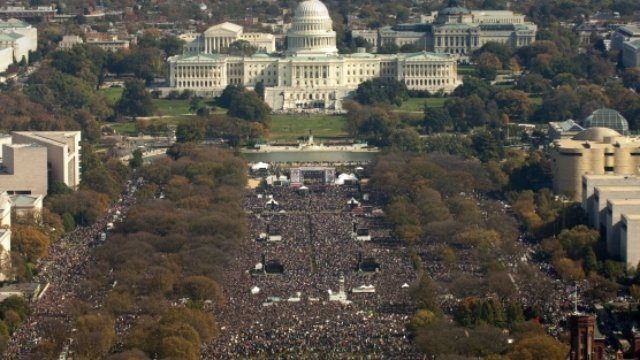Recreating Paradise: Gauguin’s Noa Noa Prints

In late August 1893, painter Paul Gauguin returned to Paris after spending the previous few years in Tahiti, the Polynesian paradise that propelled his art to a whole new level. Hoping to sell his “uncivilized” works to a “civilized” audience, Gauguin realized that he had to first explain the allure and power of that paradise to prospective purchasers. Thus, the idea for Noa Noa (“fragrant scent” in Tahitian), Gauguin’s book of those experiences, was born, along with a series of woodblock prints he designed to illustrate it. Alas, Gauguin never got to see his work published, but the prints themselves took on a whole new life, which continues today in the Princeton University Art Museum’s exhibition, Gauguin’s Paradise Remembered: The Noa Noa Prints. In this startling exhibition, we see that Gauguin’s prints portray a paradise more of the mind than of his actual experience. The island eden Gauguin hoped to enter, in fact, may never have existed—an idea that his prints, reproductions of a reality that was never truly real, emphasize through their very nature.
In the catalogue to the exhibition, co-curator Alastair Wright, lecturer in art history at the University of Oxford, contrasts these prints to the vibrancy of the paintings Gauguin created of the same subjects. These prints “were dark, a somber foil to the iridescent paintings they accompanied” in early exhibitions staged by Gauguin, Wright writes, “[a]nd most seemed to speak of deeper truths hidden under the superficial appearance of things.” Part of those “deeper truths” rested in the very reproductive nature of the prints. “[N]o matter how fervent [Gauguin’s] desire to penetrate Tahitian culture,” Wright explains, “no matter how sincere his wish to transform himself—as he so often claimed—into a ‘savage,’ he would never be able to achieve those goals.” Gauguin’s “savagery” would always remain a pale copy of the “real” thing, just as his woodblock prints would always be only an imitation of the original carving of the woodblock itself. Thus, “[r]eproduction ceases to be mere technique—a convenience in the making of images” for Gauguin, according to Wright, “and begins to operate as content.” The same fixation with reproduction that more modern artists such as Roy Lichtenstein and Andy Warhol would capitalize upon on Pop Art comes into play for Gauguin, an early modern who had only begun to play (as the curators explain) with the newfangled technology of photography and all the philosophical questions that medium raised.
Calvin Brown, Associate Curator of Prints and Drawings at the Princeton University Art Museum and also co-curator of the exhibition, traces the connections between the unpublished text of Noa Noa and the prints meant to accompany it. Brown sees the Noa Noa prints as “not literal illustrations of the story but rather a suite of prints that paraphrase key elements of his favored Tahitian paintings—evidently chosen to underscore essential themes in the narrative.” Thus, these reproduced prints are meant to reproduce paintings that reproduced a life experience Gauguin hoped to reproduce in words. The dizzying nature of this fun house of mirrors infinitely reproducing an elusive reality that itself may not be real gives a whole new perspective on Gauguin the artist and elevates him from the status of an unthinking primitive painter who reacted purely with his senses and not also his mind. For example, the print titled L’Univers est créé (“The Universe Is Created”; one version shown above), accompanies a section in Gauguin’s text in which “the narrator learns of the stars’ origins from his adolescent mistress, Tehura, as they lie together gazing up at the night sky,” Brown relates. Yet, as Brown explains, Gauguin borrowed that tale from an ethnographer who studied the Oceanic gods of the Tahitians. In fact, “[t]he narrative content of” L’Univers est créé “is loosely based on the universe that Gauguin copied directly from” a book by the same ethnographer. Thus, Gauguin’s “authentic” tale of island life (and love) comes from a source outside his own experiences. The romantic universe of Gauguin’s island idyll becomes a work of art itself—a child of his imagination more than of real life.
“By embracing a multiplicity of reproduced images and reproductive processes in these works,” Brown summarizes in the preface, “Gauguin allowed his expectations of attaining an authentic Tahitian experience to fall away, reflecting instead on this poignant impossibility as preserved in his indelible impressions of a paradise remembered.” Fans of Gauguin may come away from Gauguin’s Paradise Remembered: The Noa Noa Prints disappointed in the relative colorlessness of the works, so far departed from our conventional idea of the artist. Those who allow the repetition of prints to work on their minds, however, as Gauguin (according to Brown and Wright) intended, will get a more diverse, more accurate view of the artist. Freed of the bombast of his own color palette and the one-of-a-kind nature of painting on canvas, Gauguin could see the reality (or unreality) of his pursuit of paradise more clearly. This exhibition flips the conventional wisdom of Gauguin as the primitive painter amongst the savages on its head to give us a new view of the artist and one that tears away the romantic trappings of the tale to give us a startlingly more complex and modern visionary.
[Many thanks to the Princeton University Art Museum for providing me with a review copy of Gauguin’s Paradise Remembered: The Noa Noa Prints (published by Yale University Press), the catalogue to the exhibition running through January 2, 2011.]





